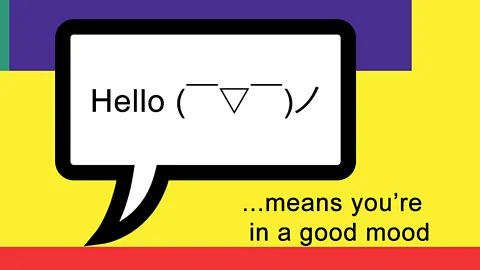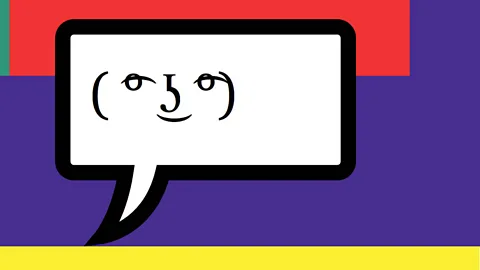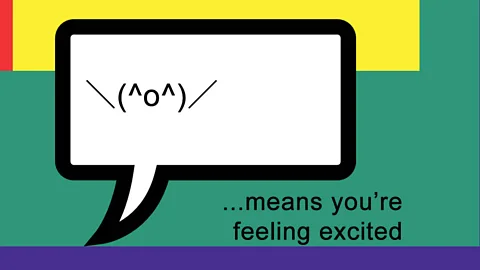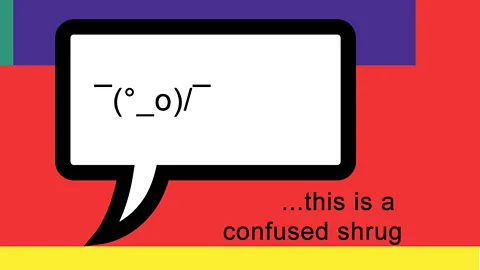:-o: The surprising power of emoticons

From :) to ¯\(°_o)/¯, there are now thousands of emoticons, and as Chris Baraniuk discovers, some can even sway our behaviour.
It all started with an awkward moment online. In the early 1980s, computer scientist Scott Fahlman realised his words were failing him. When communicating with others on a forum, he found that it was difficult to convey that some posts were meant to be taken as a joke.
So one day, he strung together a colon, a dash and a bracket to make what is now an instantly recognisable character:

Since then, thousands of emoticons like this have emerged, conveying a diverse and complex array of emotions and concepts. And researchers are now realising that emoticons may hold a power over us that we didn’t realise – when we use them to communicate, they can transform our decisions and behaviour in unexpected ways.
To understand the scope of emoticons, you only have to look at the website curated by Vladimir Khotulev: it’s dedicated to compiling Japanese emoticons, also known as kaomoji, a breed of emoticon that is particularly diverse.
Collecting these symbols is perhaps an unusual hobby for a software developer in his mid-twenties living in Belarus – Khotulev is half a world away from the Japanese culture which fascinates him. But that’s the point: the language of emoticons articulates feelings in a universal way.
Take the way that they transform a simple phrase, says Khotulev. For example:

But another emoticon can transform the greeting to:

(If you can’t see the difference, the first emoticon is a contented face waving, and the second signifies “throwing a table upside down in anger”.)
Khotulev argues that using emoticons can often provoke stronger and more varied responses from conversation partners when chatting online. He even uses them to communicate better with his girlfriend, he says.
Khotulev is far from alone in his interest in these characters. There’s a forum on Reddit, for example, dedicated to clarifying the meaning of emoticons and suggesting new ones. Some of the most popular emoticons have taken on meme status, such as “Lenny Face”.

First coined on 4chan, Lenny Face’s meaning is notoriously slippery. As Urban Dictionary eloquently notes, “It fits for everything and makes most people laugh their ass off if they get the joke.” This ineffable quality also allows some of these characters and symbols to be “owned” by the people who understand them, and their insider feel may encourage a sense of community where communication is anonymous and text-only.
Missed meaning
For sociology professor Ben Agger at the University of Texas at Arlington, the growth of emoticons says a lot about how we’re otherwise limited when communicating online.
“Emoticons bring the nuances of face-to-face or voice-to-voice interaction, those nuances and subtleties which are necessarily lacking when you’re interacting by way of the screen,” he says. “They attempt to make up for that alienation.”
Agger has written a book called Texting Toward Utopia in which he argues that we live in “the most literary of times” – times in which children and young people harness the expressive power of writing to communicate across long distances and in spite of societal pressures. Emoticons, of course, are a fundamental component in that expression.

Now that we are aware of emoticons’ social significance, researchers have begun to investigate exactly how they can influence us during conversations. For example, one recent study found that using smiley face emoticons when delivering negative feedback to employees improved the chances of that feedback being accepted, so long as the feedback itself was specific. Other research found that students could be made more willing to participate in online classes when emoticons were used in online discussion groups.
How you use emoticons can even reveal identifying details about who you are. Women, for instance, characteristically use emoticons at a higher frequency than men.
All of this suggests that our connection to these characters and faces is anything but trivial. It’s even been shown that emoticons provoke activity in our brains which is similar to brain activity registered when we look at a real human face.
In other words, we have been culturally conditioned to react to emoticons in strong ways. They really do carry complex and meaningful emotions in ways that standard words cannot.
Social cues
It’s no wonder, then, that Facebook has invested in developing sophisticated picture-like emoticons. Last year, psychologist Dacher Keltner of University of California, Berkeley was commissioned by the social media giant to help design a new array of animated emoticons, more like the cartoon icons sometimes described as “emoji”, expressing everything from “feeling anxious” to “indignant”.
He explains that Facebook wants to find new ways of allowing users to communicate in non-verbal ways. “The more individuals use emoticons, the more they’re likely to communicate with each other and respond to each other’s messages and replies,” he suggests.
Keltner says that these experiments suggest that emoticons of the future could be even more elaborate if they are to fully capture the essence of any emotion which we want to deliver in a single message. If they could capture our own appearance, body language or tone of voice somehow, perhaps we could create truly idiosyncratic emoticons tailored for use only by a given individual with their partner, family members or close friends.
For now though, Keltner says that Facebook is interested in harnessing the power of emoticons to help users navigate situations in which interacting via text only is most awkward. “We’re working on helping people communicate about thorny things like when they put up a photo that hurts somebody’s feelings or embarrasses them,” he explains.
“We know from the scientific literature that when I blush if I’ve made a mistake, people forgive you and think, ‘OK, we all make mistakes, that’s part of humanity.’ And we’re hoping that we can eventually get to that kind of text.”
In the eyes of Agger, it all provokes a rethink of what we understand as human communication itself. Perhaps we could be better at formally accepting emoticons as part of language, too. “I think emoticons have to count as language,” he argues. “This is what the 21st Century is showing us, it’s expanding what counts as language and also what counts as writing. All of this is writing.”
